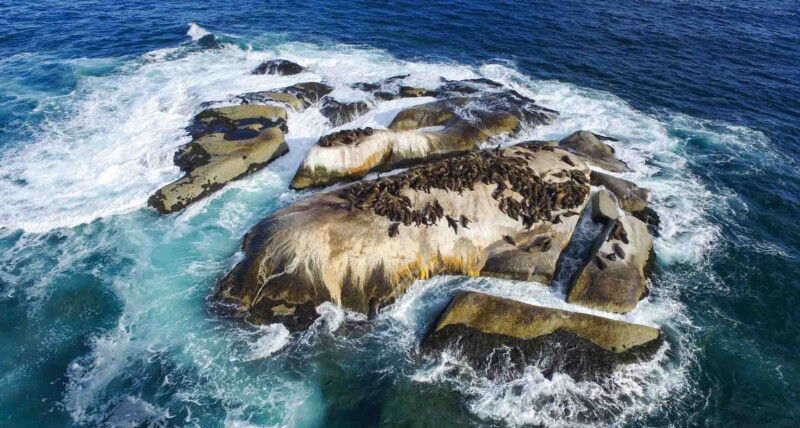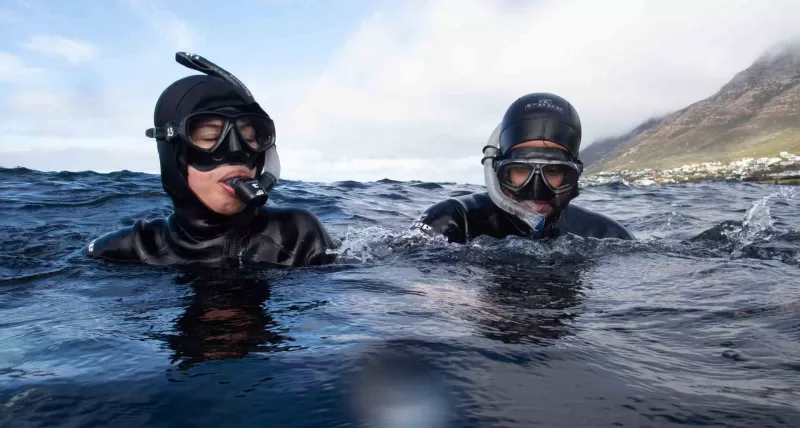Het Huis te Kraaiestein Wreck - Atlantic Seaboard
- Access: Shore Dive (Great for scuba diving and freediving)
- Experience Level: Suitable for Open Water Scuba Divers, Freedivers, and Snorkellers
Interests: Shipwreck, Nudibranchs, Kelp Forests, Maritime History - Depth Range: 3m to 12m
- Average Dive Time: Approximately 60 minutes
- Other Dive Sites in the Area: Justins Caves, Strawberry Rocks, Antipolis Wreck
- Best Time to Dive: October to March

Dive Site Overview:
The Het Huis te Kraaiestein Wreck offers a glimpse into maritime history and underwater beauty. This Dutch ship, with a tonnage of 1,154, was constructed in 1697 at the Zeeland Yard for the Zeeland Chamber of the Dutch East India Company. Under the command of Jan van de Vijver, it tragically met its fate on May 27, 1698, when it was wrecked on the rocks in the bay at Oudekraal on the Cape Peninsula. This mishap occurred in thick mist as the ship was attempting to find its way into Table Bay. The vessel was on its maiden voyage, outward-bound from Wielingen since February 1, 1698, carrying a cargo of 19 chests of pieces-of-eight, approximately 57,000 pieces in total. The wreck may hold more secrets, as three chests of treasure disappeared during the incident, and the name “Geldkis” (money-chest) is marked on maps of the area.
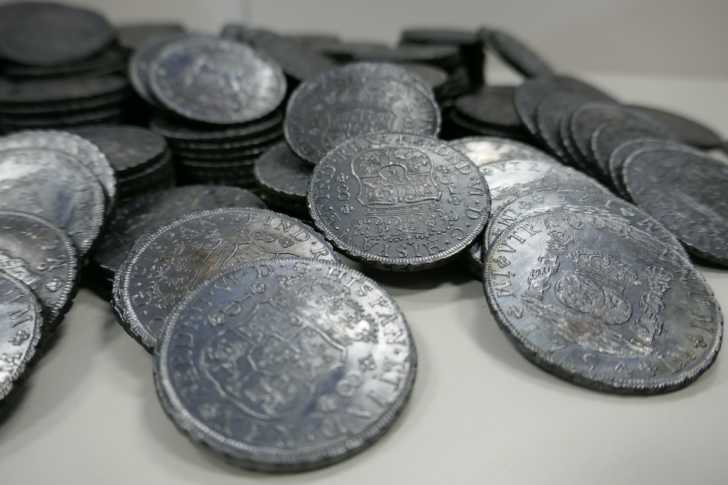
Today, the wreck has fragmented, and only a few remnants remain. These items, usually entirely overgrown, are recognizable by their unusually straight lines. Notably, two large cannons, each about 3 meters long and 0.4 meters in diameter, lie at the southern end of a gap between two boulders. They slope down to the south, with one of the cannons appearing to be broken. These cannons are arranged in a V formation, with the shallow ends closer to each other. They have become heavily encrusted and partly wasted over time, making them less immediately recognizable.
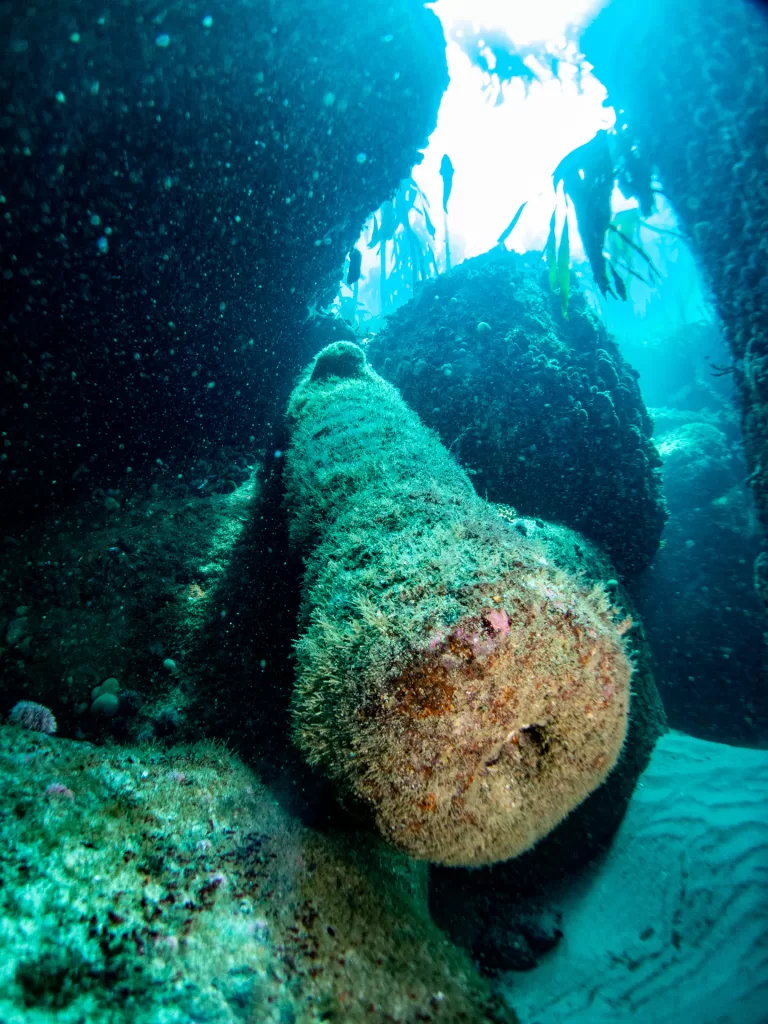
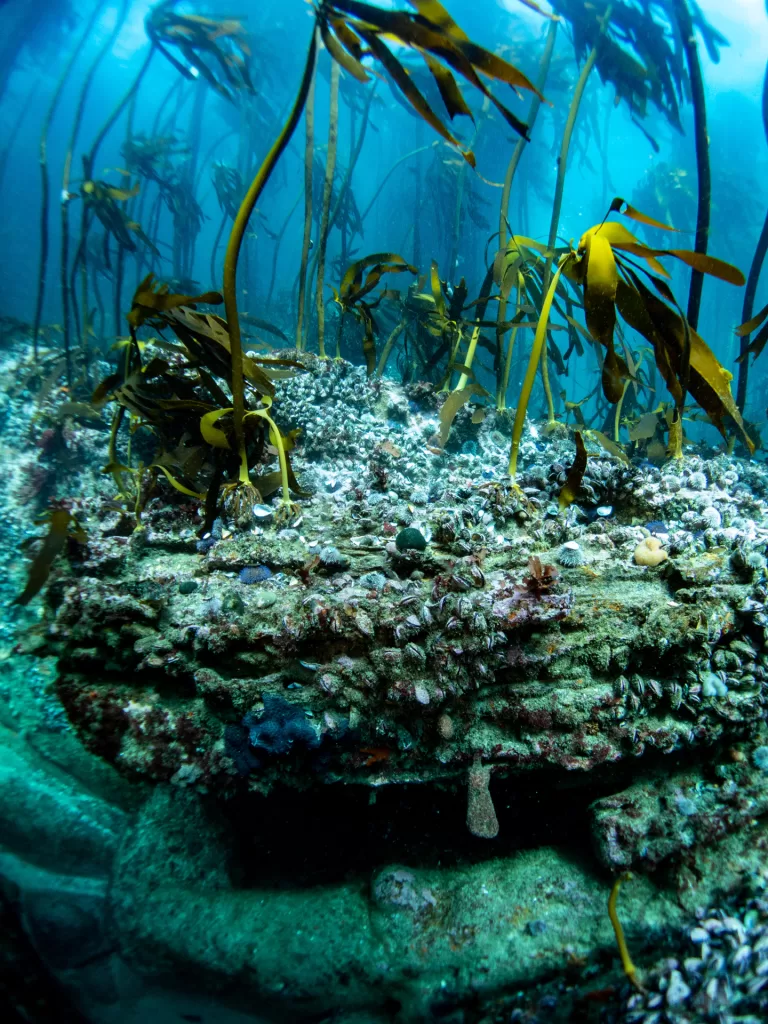
The dive site is enhanced by a large kelp forest with many granite boulders, providing a habitat for various marine life. You can often spot shysharks, crayfish, and numerous types of nudibranchs on your dive. Fish like bream and red roman also frequent the area, and klipfish can be found all over the reef.
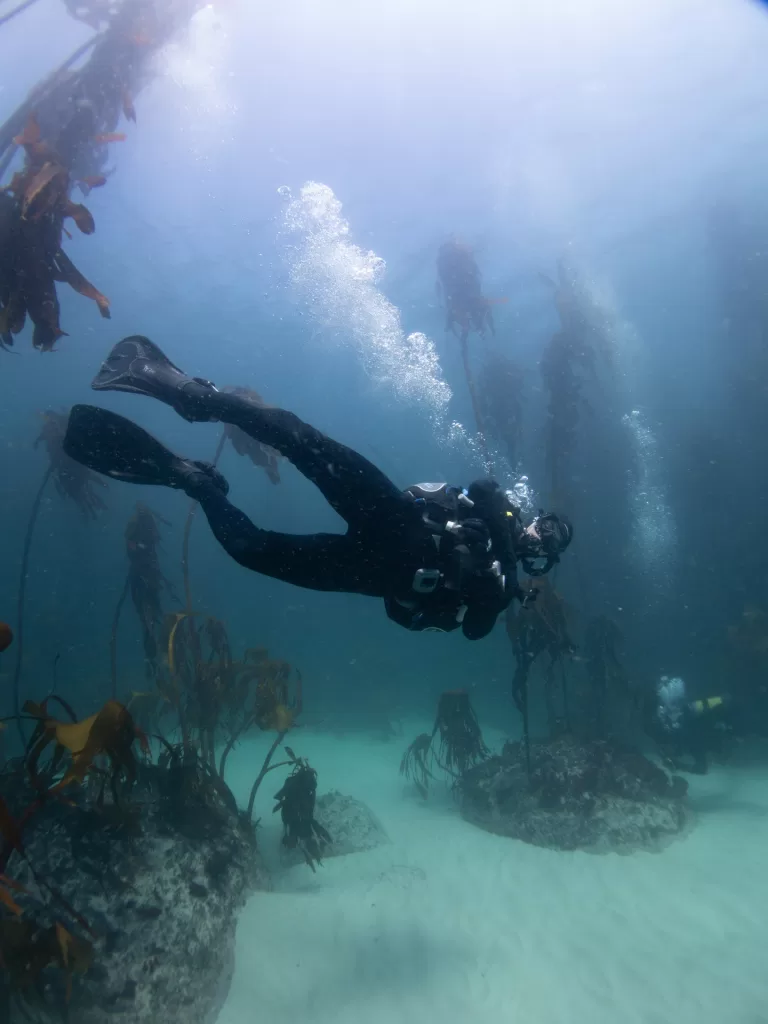
Navigating to the Wreckage with the Cannons:
To locate the wreckage with the cannons, follow these instructions:
- Enter at Sandy Cove, swim out through the gap toward Geldkis.
- Proceed to the southern tip of Geldkis, keeping to the left of a small cluster of rocks situated approximately 50 meters offshore.
- After passing these rocks, swim about 30 meters behind them.
- Look for a small, darkish rock with a cleft in the middle. Position yourself so you can see directly through the cleft, facing the shore.
- While maintaining this line, look to your right, where you’ll see a large egg-shaped rock about two-thirds of the way along the large cluster of rocks leading out to sea.
- Continue swimming out to sea until you can see the hole at the left edge of this rock, which will place you directly above the wreck site.

Recommended Equipment:
- Scuba Diving Gear: Typically, scuba divers at Sandy Cove use 10L or 12L air cylinders, as the dive is relatively shallow, and Nitrox is not commonly used.
- Compass: An essential tool for navigation, especially if you want to avoid long surface swims.
- Thermal Protection: 5mm Wetsuit with Overpiece. Given the potentially chilly water temperatures that can drop as low as 8°C, wearing a suitable wetsuit, gloves, boots, and a hoodie is a must.
- Dive Light: Consider bringing one if you intend to search for smaller critters or peek into holes and swimthroughs.
Underwater Camera
For capturing the cannons, marine life, and kelp forests, GoPro’s and compact cameras are preferred choices for most divers. SLRs with wide-angle lenses are often used for capturing the stunning underwater scenery. However, keep in mind that big SLR setups can be somewhat challenging to carry over the rocks, and you might need assistance from your dive buddy to enter and exit the water.

